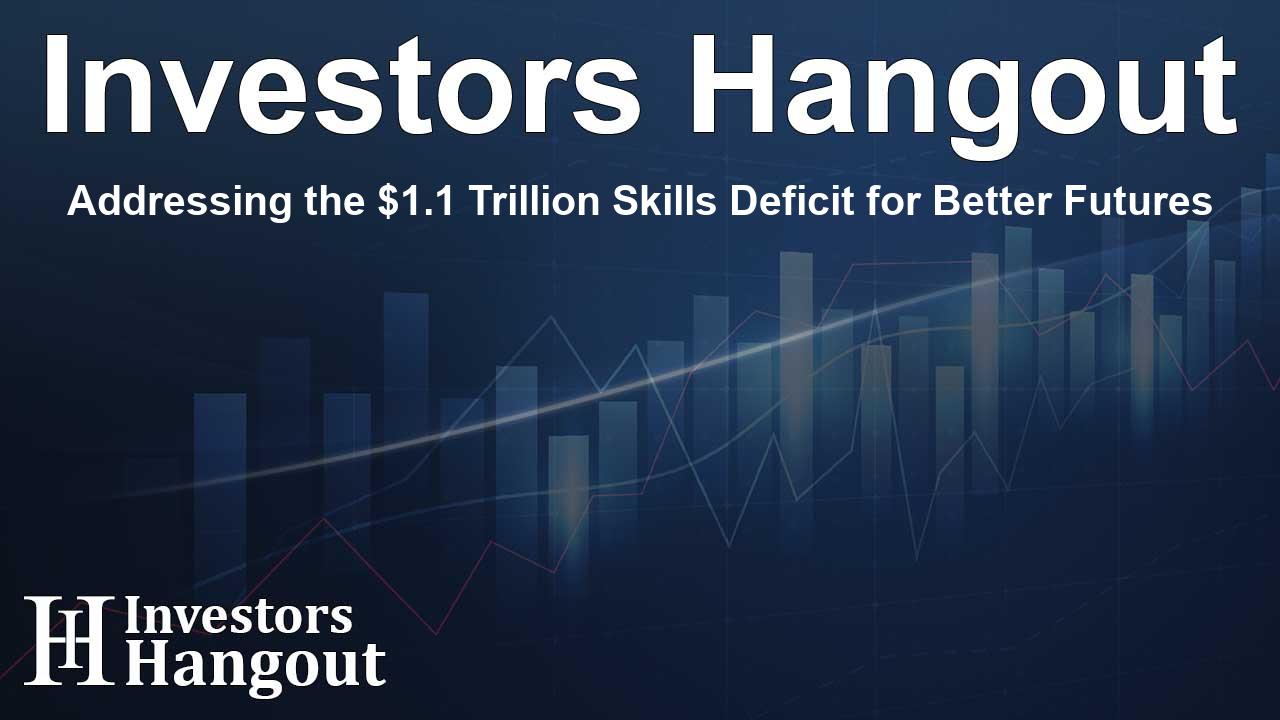Addressing the $1.1 Trillion Skills Deficit for Better Futures

Understanding the Skills Gap Crisis
The world is currently facing a significant challenge as demographic shifts and rapid technological advancements create unprepared workforces. This situation threatens economies globally, leading to what experts call a "skills chasm." This gap refers to the mismatch between the skills employers need and those that employees possess, which poses a serious risk to economic stability.
Economic Impact of Inefficient Career Transitions
Recent findings indicate that the United States bears an annual earnings loss of an astonishing $1.1 trillion, which equates to roughly 5% of its GDP. These losses are primarily attributed to inefficient career transitions and critical learning gaps experienced by the workforce. Individuals are struggling to navigate these transitions effectively, resulting in economic decline and personal dissatisfaction.
The Importance of Learning to Learn
An essential element in overcoming this crisis is prioritizing the concept of "learning to learn." This approach emphasizes the need for individuals to develop metacognitive skills, which include goal setting, critical thinking, and self-regulation. By redefining educational curricula and corporate training programs to include these skills, it’s possible to enhance the ability of the workforce to adapt to changing job landscapes, thus improving overall productivity and job satisfaction.
Calling for Modern Skilling Pathways
Moving away from traditional, linear career paths, experts advocate for the development of dynamic skilling pathways that can adapt to the evolving nature of work. A substantial focus is placed on work-based learning methods, such as apprenticeships, which align skills with real-world demands. These pathways not only serve to close the skills gap but can also potentially generate an additional $40 billion for the U.S. economy yearly by simply reducing the time individuals spend transitioning from education to employment.
Innovative Tools and Techniques
The report also highlights innovative approaches to bridge the skills gap. Techniques such as career exploration through virtual reality, the financing of lifelong learning opportunities, and the use of digital wallets for robust skills tracking are discussed as pivotal strategies to guide individuals in their career journeys. Moreover, AI-powered career mapping and the establishment of a common skills language can greatly enhance the efficiency of skills validation processes.
Collaboration is Key
For meaningful change to occur, collaboration among educators, employers, and government entities is critical. According to industry leaders, without decisive action, the skills gap could irrevocably widen, potentially creating a detrimental chasm in the workforce. It's essential that all parties recognize the urgency of addressing this growing issue and partner to find innovative solutions that promote effective learning and skills development.
The Role of Leadership
Describing the urgency of the situation, Pearson's CEO emphasizes the necessity for change. He notes, "Learning how to learn will become the focus for students, workers, and employers alike. Our mission is to help prevent the skills gap from turning into a skills chasm through partnership and proactive strategies." This highlights the significant role that leadership must play in fostering an environment that supports continuous learning and adaptation.
Frequently Asked Questions
What is the skills gap?
The skills gap refers to the disparity between the skills employers seek and the skills that prospective employees possess, leading to workforce inefficiencies.
How much is the U.S. economy losing due to learning gaps?
The U.S. economy is experiencing annual losses of approximately $1.1 trillion due to inefficient career transitions and learning gaps.
What actions can be taken to address the skills gap?
Implementing modern skilling pathways, promoting 'learning to learn,' and fostering collaboration between education and industry are crucial steps to narrow the skills gap.
Why is 'learning to learn' important?
'Learning to learn' is essential as it equips individuals with the skills to adapt and thrive in an ever-changing job market, enabling personal and professional growth.
How can technology help in bridging the skills gap?
Technologies like virtual reality for career exploration, AI-powered career mapping, and digital wallet systems for skills tracking can significantly improve learning outcomes and job readiness.
About The Author
Contact Henry Turner privately here. Or send an email with ATTN: Henry Turner as the subject to contact@investorshangout.com.
About Investors Hangout
Investors Hangout is a leading online stock forum for financial discussion and learning, offering a wide range of free tools and resources. It draws in traders of all levels, who exchange market knowledge, investigate trading tactics, and keep an eye on industry developments in real time. Featuring financial articles, stock message boards, quotes, charts, company profiles, and live news updates. Through cooperative learning and a wealth of informational resources, it helps users from novices creating their first portfolios to experts honing their techniques. Join Investors Hangout today: https://investorshangout.com/
The content of this article is based on factual, publicly available information and does not represent legal, financial, or investment advice. Investors Hangout does not offer financial advice, and the author is not a licensed financial advisor. Consult a qualified advisor before making any financial or investment decisions based on this article. This article should not be considered advice to purchase, sell, or hold any securities or other investments. If any of the material provided here is inaccurate, please contact us for corrections.
